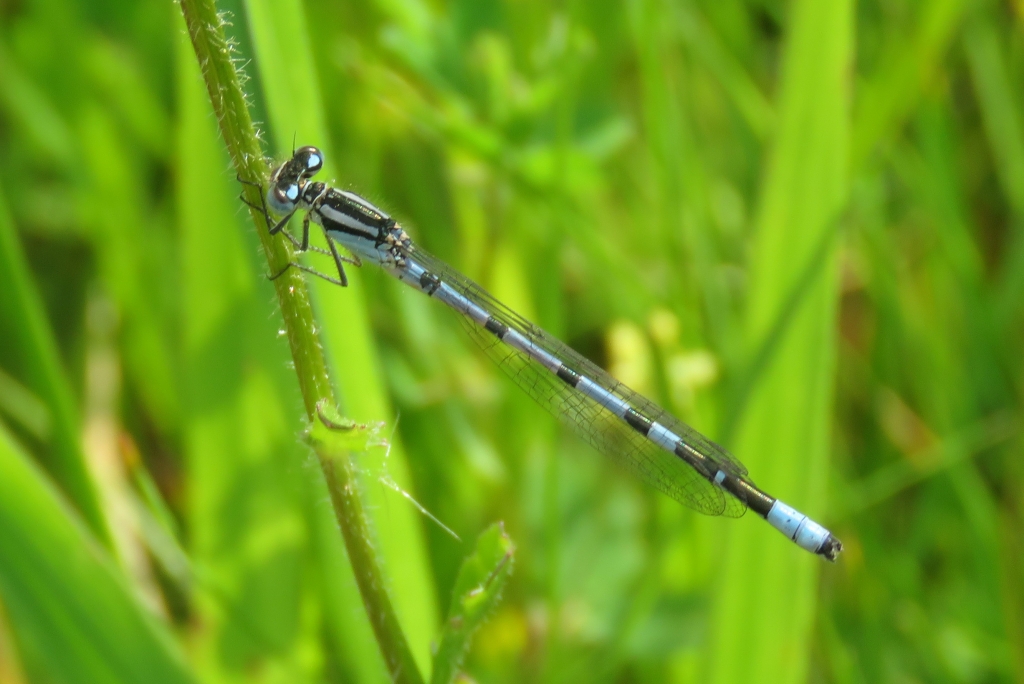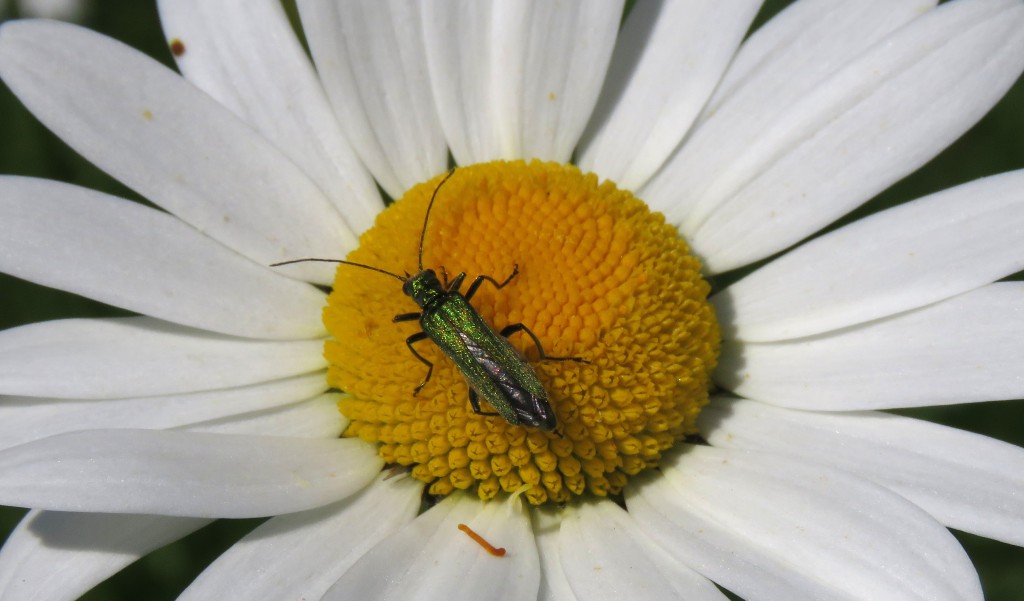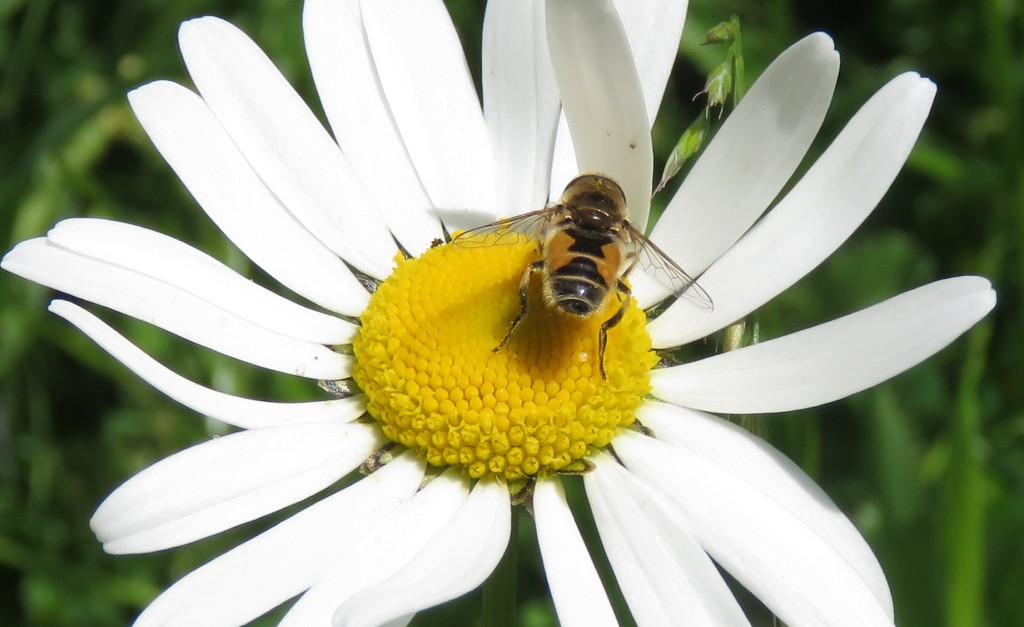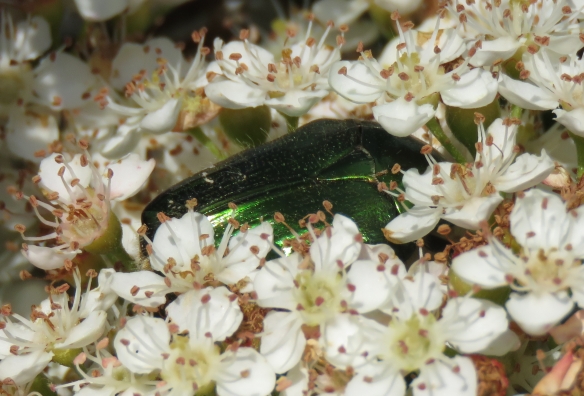It may not have had quite the celebrity status of George Harrison and Eric Clapton vying for Pattie Boyd’s heart [for that story, see here], but earlier this month, I had a very entertaining hour and a half watching a grebe love triangle. Two males were battling it out for conjugal rights to a female – and after several fights, the winning pair engaged in not one but two weed-dances.
The first scrap I saw started some distance away – notice the female fleeing the scene while the two males battle it out.

The next phase – equally aggressive – was a bit closer. It’s hard to do justice to the nature of the scrap, because only a few of the photos give a clear enough picture of what was happening. Notice the female lurking behind the male on the right.
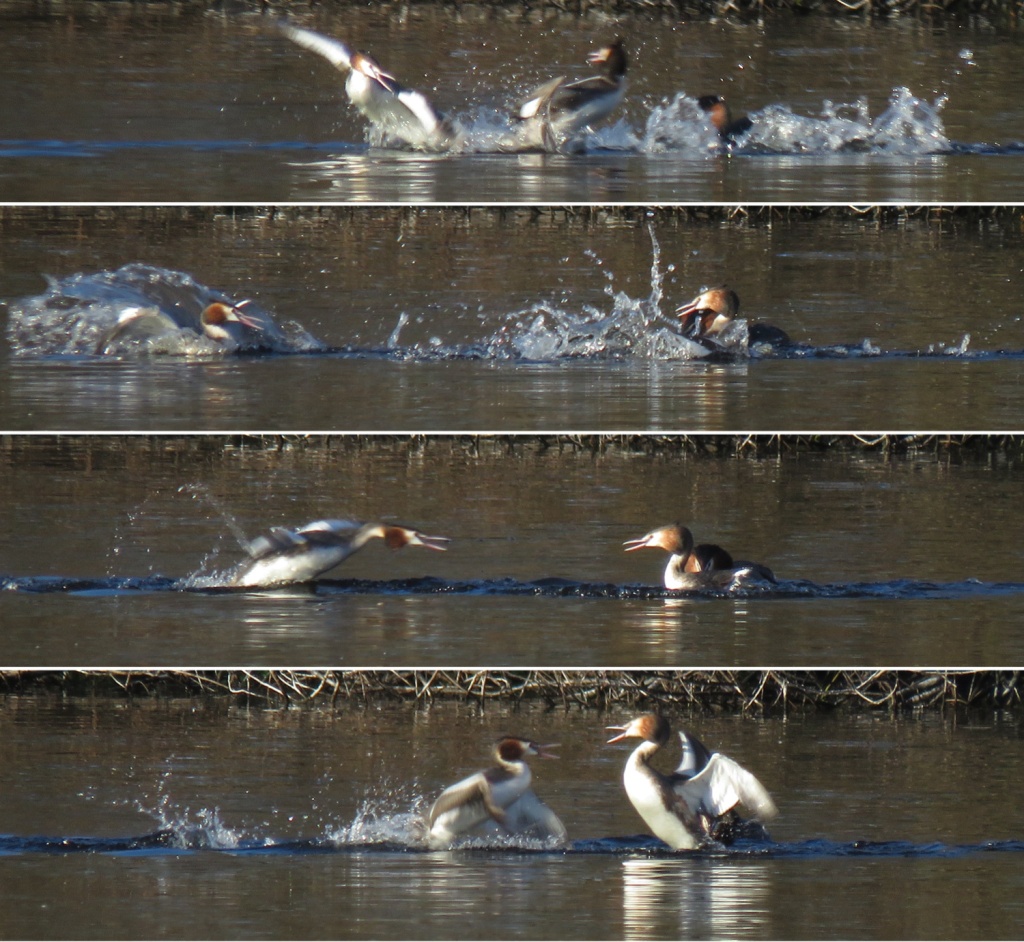
I’d love to know who won the fight – whether the winner retained his partner, or whether the winner usurped the losing male’s partner. What was obvious was that the losing male didn’t want to give up easily, so that there were scuffles long after the two main battles were over. Was the persistence merely because the losing male fancied that particular female so much but he couldn’t overcome the resident male – or was it because he’d been jilted in favour of the intruding male, and the fire of jealousy wasn’t dying easily? If only we could know!
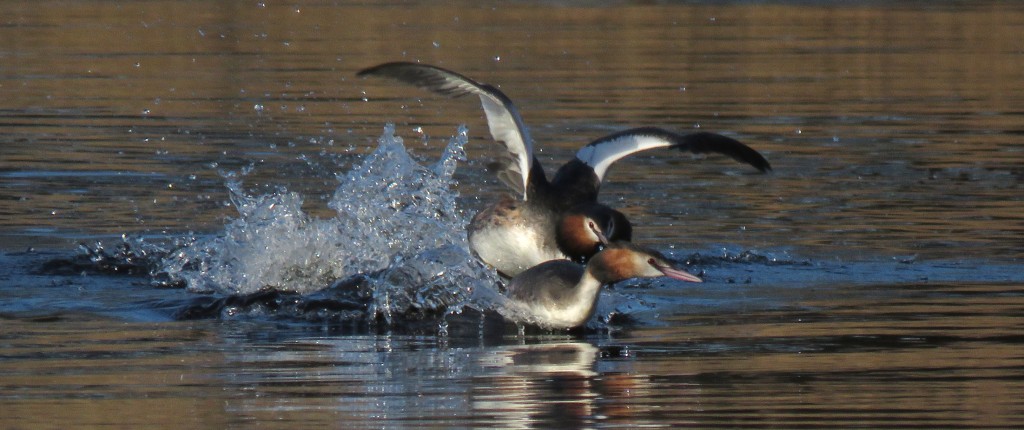
After the battles, romance ensued between the winning pair. There was lots of head-bobbing and shaking, in that mysterious and wonderful way of grebes – where there is probably more meaning in the moves than humans can fathom. Twice, these culminated in a full weed dance, which is intensely romantic and elaborate, and unique to grebes. The first weed dance led to better photos (see later) but the second one allowed me to document the sequence better.
Weed dances start with the head-shaking ritual, and then the pair dive away from each other (an important sign that I learned from a book by Dominic Couzens). Seeing one of the pair eagerly carrying weed in its beak raised my anticipation for what was to follow!

The pair then approached each other rapidly and rise up together – with a great deal of splashing!



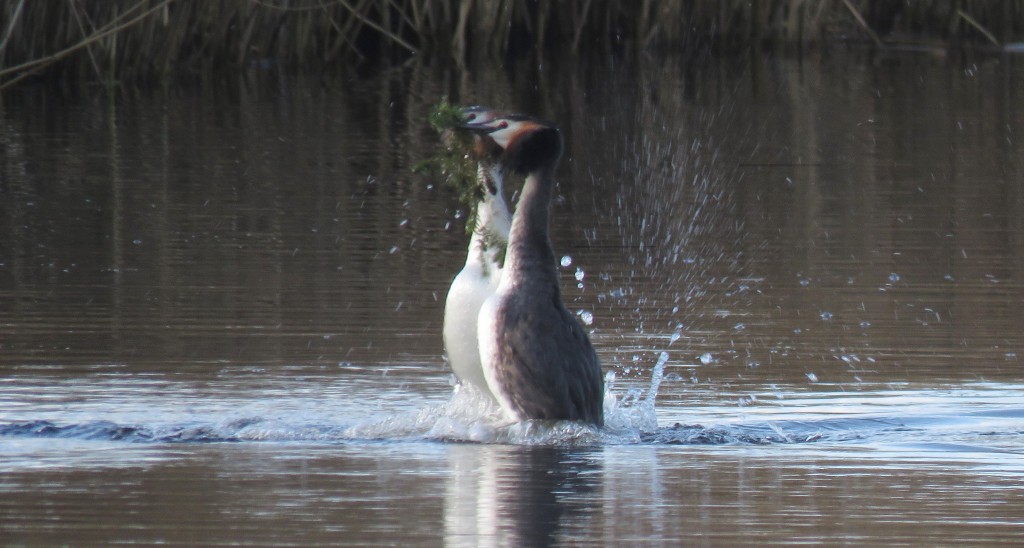

My photos of the first weed dance are probably a bit better, because the Sun was out so that lighting was better.

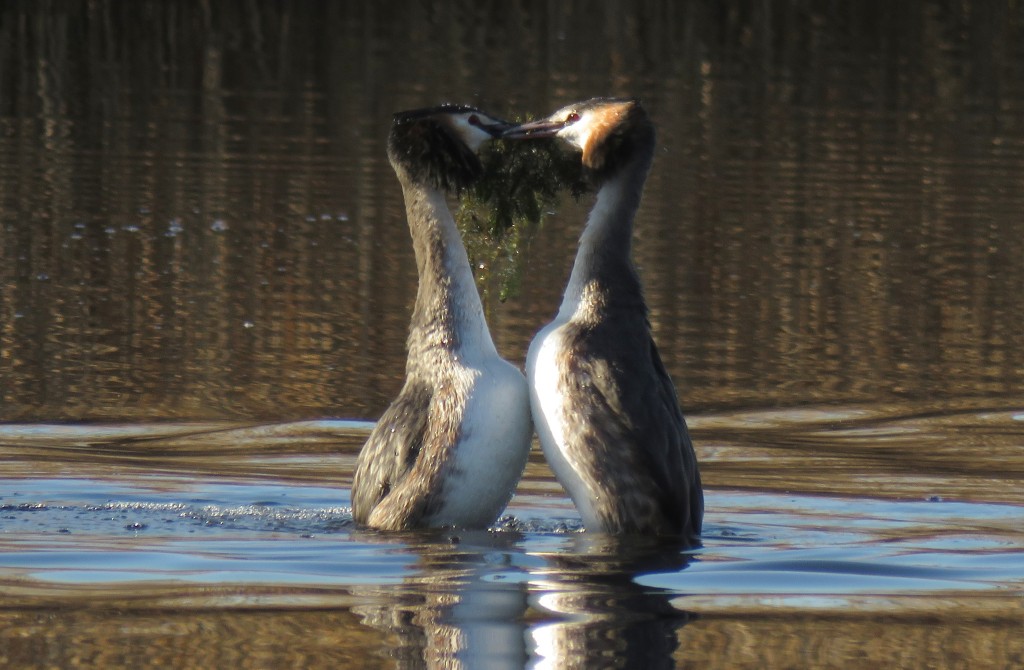

One of the attractions of watching grebes is that you feel that you are watching their emotional world. We can’t read bird emotions from their facial expressions (they don’t have any), but it seems impossible to understand the way these grebes interacted with each other without recognising their emotional world. After my morning watching these three grebes interacting, I was more convinced than ever about the reality – and intensity – of their emotions.


